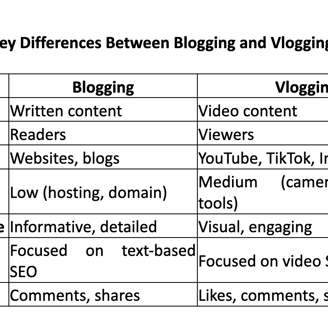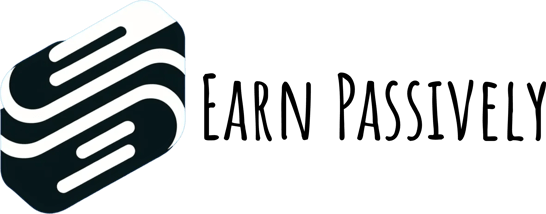Blogging vs. Vlogging: What’s the Difference and How to Monetize
In today’s digital era, content creation has become one of the most effective ways to build a brand, share ideas, and generate income. Two of the most popular avenues are blogging and vlogging. While they share similarities as content formats, they cater to different audiences and utilize distinct platforms. In this article, we’ll dive deep into the differences between blogging and vlogging, explore examples of successful content creators, and discuss strategies to monetize both effectively.
What Is Blogging?
Blogging is the art of creating and publishing written content on a website. Blogs can cover a wide range of topics—from personal experiences to niche interests, industry insights, tutorials, and more. Bloggers use text, images, and sometimes videos to convey their messages, with a focus on readability and searchability.
Key Features of Blogging:
Primarily text-based.
Often incorporates images and infographics.
Ideal for in-depth explanations and evergreen content.
Hosted on platforms like WordPress, Wix, or Medium.
Examples of Popular Blogging Niches:
Travel blogs (e.g., Nomadic Matt).
Food blogs (e.g., Pinch of Yum).
Personal finance blogs (e.g., The Penny Hoarder).
Tech blogs (e.g., TechCrunch).
What Is Vlogging?
Vlogging (video blogging) focuses on video content shared on platforms like YouTube, TikTok, or Instagram. Vlogs are often personal and engaging, showcasing the creator’s personality, day-to-day life, or expertise in a specific niche.
Key Features of Vlogging:
Video-based content.
Often more informal and dynamic.
Ideal for storytelling and visually appealing topics.
Hosted on platforms like YouTube, Vimeo, or social media channels.
Examples of Popular Vlogging Niches:
Lifestyle vlogs (e.g., Emma Chamberlain).
Gaming vlogs (e.g., PewDiePie).
Travel vlogs (e.g., Kara and Nate).
Beauty vlogs (e.g., NikkieTutorials).






How to Monetize Blogging
Blogging offers multiple ways to generate income, especially if you build a loyal audience and attract significant traffic to your site. Here are some proven monetization strategies:
Advertising:
Use platforms like Google AdSense to display ads on your blog.
Earn revenue based on impressions or clicks.
Affiliate Marketing:
Partner with brands to promote their products.
Earn commissions for sales made through your unique affiliate links.
Example: A tech blogger might recommend software tools with affiliate links.
Sponsored Posts:
Collaborate with companies to write about their products or services.
Example: A travel blogger writing a detailed review of a hotel or travel gear.
Selling Digital Products:
Create and sell eBooks, courses, templates, or printable materials.
Example: A personal finance blogger offering budget tracking templates.
Memberships and Subscriptions:
Offer exclusive content to paying subscribers.
Platforms like Patreon or Substack make this easier.
5. How to Monetize Vlogging
Vlogging also offers lucrative monetization opportunities, thanks to its ability to attract engaged audiences. Here are some common ways to earn from vlogging:
Ad Revenue:
Join YouTube’s Partner Program to earn from ads displayed on your videos.
Income depends on views, ad clicks, and audience demographics.
Sponsorships:
Partner with brands to promote their products in your videos.
Example: A beauty vlogger reviewing a new makeup line.
Affiliate Marketing:
Include affiliate links in video descriptions or as pinned comments.
Example: A tech vlogger linking to camera gear on Amazon.
Merchandise Sales:
Sell branded merchandise like T-shirts, mugs, or custom products.
Example: A lifestyle vlogger creating a line of inspirational apparel.
Super Chats and Memberships:
Platforms like YouTube and Twitch allow fans to support creators through direct payments, live chats, or exclusive memberships.
Crowdfunding:
Use platforms like Patreon or Ko-fi to receive financial support from fans.
Offer perks like behind-the-scenes content or shoutouts.


Which Is Better for You: Blogging or Vlogging?
The choice between blogging and vlogging depends on your skills, interests, and resources. Here are some considerations:
Choose Blogging If:
You enjoy writing and have a knack for crafting detailed, informative content.
You prefer working behind the scenes rather than being on camera.
You have limited resources, as blogging typically has a lower startup cost.
Choose Vlogging If:
You’re comfortable in front of the camera and enjoy visual storytelling.
Your content is best suited for dynamic, engaging formats (e.g., tutorials, reviews).
You have access to basic video equipment and editing tools.


Combining Blogging and Vlogging
Why choose one when you can do both? Many successful content creators combine blogging and vlogging to maximize reach and revenue. For example:
A travel vlogger can embed their YouTube videos into a travel blog, offering itineraries and detailed travel guides.
A food blogger can create recipe videos and embed them in their blog posts, catering to both readers and viewers.
Benefits of Combining Both:
Diversify your audience.
Increase SEO potential by using written content and video.
Leverage multiple revenue streams (ads, affiliates, sponsorships).


Tips for Success
Whether you choose blogging, vlogging, or both, success requires consistency, quality, and audience engagement. Here are some tips:
Know Your Audience:
Understand their preferences, pain points, and content consumption habits.
Invest in Quality:
For blogging, focus on clear, error-free writing and appealing visuals.
For vlogging, prioritize good lighting, sound, and editing.
Optimize for SEO:
Use keywords to rank higher in search results, whether on Google or YouTube.
Engage with Your Audience:
Respond to comments, create polls, and ask for feedback to build loyalty.
Experiment and Adapt:
Track performance metrics and adjust your content strategy as needed.
Final Thoughts
Blogging and vlogging each offer unique opportunities for creativity, connection, and income generation. The best option for you depends on your strengths, interests, and resources. By understanding their differences, exploring monetization strategies, and staying consistent, you can build a successful content creation journey. And remember, the most successful creators often combine both to maximize their impact and earnings. The key is to start, learn, and evolve—your audience and income will follow.
Checkout our latest blog articles
Mission
Our mission is to make launching an online business effortless by providing you with the right information to help you start earning passive income.
contact@earnpassively.com
© 2024. All rights reserved.
Links included in this description may be affiliate links. If you purchase products using the links included I may receive a commission however, there is NO additional charge to you. Also, I am not a financial advisor nor am I a psychologist, I share information that I have used successfully or that others that I am aware of have used. If you opt to use anything that I share you do so at your own risk and you take full responsibility for the outcome. Any advice and information shared on my blog is general only and is being shared without taking into account your particular circumstances and needs. Before acting on any advice shared you should assess or seek advice on whether it is appropriate for your needs, financial situation and investment objectives.
